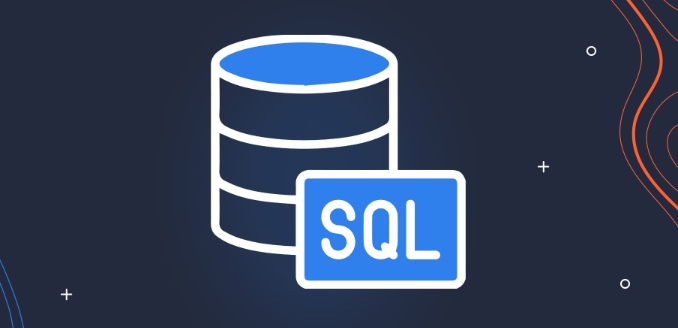Designing and Managing SQL Views for Reporting
Views are suitable for report development because they encapsulate complex logic, standardize outputs, and control permissions. For example, create a customer_order_summary view to count the total customer order amount and simplify upper-level application query. Designing efficient report views requires maintaining a single responsibility, avoiding deep nesting, paying attention to performance impacts, and being clearly named. The management view should be documented, regularly reviewed, optional version control, and a testing mechanism should be established. Although the last view is good, do not abuse it. The OLTP scenario may increase the pressure on the database.

SQL views are very practical in report development, which can simplify complex queries, unify data calibers, and improve maintainability. But poor design and management can also lead to performance problems or logical confusion. The key is to understand its applicable scenarios and to organize the structure reasonably.

What is a view? Why is it suitable for reporting?
The view is essentially a saved SQL query that looks like a virtual table. It has several obvious advantages for the reporting system:
- Encapsulation complex logic : hide multi-table connections, aggregation computing, etc. in the view. The upper-level application only needs
SELECT * FROM view_name. - Standardized output : When multiple reports use the same business metric, the view can ensure logical consistency and avoid repeated errors.
- Permission Control : You can limit exposure of sensitive fields by granting users access to views rather than underlying tables.
For example, if you want to frequently count the "total order amount for each customer", you can create a view customer_order_summary , which contains fields such as customer ID, name, total amount, etc., so that you don't need to write SUM() and GROUP BY again every time you get the number of the report.

How to design efficient report views?
Design view is not just about storing queries, but a few details need to be paid attention to:
-
Stay single responsibility : One view only completes one clear task, such as "customer order summary" or "product inventory status". Don't try to solve too many problems in one view.

Avoid too deep nesting : Although other views can be called in the view, too deep levels will make the execution plan worse and it is difficult to troubleshoot problems. It is recommended to nest at most one to two layers.
Pay attention to performance impact : The view itself does not store data, and it executes queries in real time. If the basic table data volume is large and there is no suitable index, it may slow down the report response speed. Materialized views (such as PostgreSQL's
MATERIALIZED VIEWor MySQL's manual implementation) can be considered if necessary.Clear field naming : The column names returned by the view should be clear in semantics, such as using
total_order_amountinstead ofsum1, for easy identification and use of front-end tools.
Some practical suggestions for managing views
Once there are too many views, a certain management strategy is required, otherwise it is easy to get out of control:
Documentation : Records the purpose of each view, which tables it depends on, and whether sensitive data is involved. You can use the database annotation function or maintain a simple form.
Periodic review : As business changes, some views may no longer be used, or the logic is outdated. Cleaning useless views can reduce maintenance burden.
Version control (optional) : If you use Git to manage database code, you can put the view definition file in to facilitate tracking changes.
Testing mechanism : After modifying the view, it is best to have a simple way to verify whether the result is correct. For example, write a few
SELECTexample statements to check whether the output meets expectations.
A last little reminder
Views are a good tool, but don't abuse them. For example, frequent use of complex views in OLTP scenarios may increase the pressure on the database. Report views are more OLAP-style, and as long as they are designed properly, there is usually no big problem.
Basically that's it. If used well, views can make report development more efficient and standardized.
The above is the detailed content of Designing and Managing SQL Views for Reporting. For more information, please follow other related articles on the PHP Chinese website!

Hot AI Tools

Undress AI Tool
Undress images for free

Undresser.AI Undress
AI-powered app for creating realistic nude photos

AI Clothes Remover
Online AI tool for removing clothes from photos.

Clothoff.io
AI clothes remover

Video Face Swap
Swap faces in any video effortlessly with our completely free AI face swap tool!

Hot Article

Hot Tools

Notepad++7.3.1
Easy-to-use and free code editor

SublimeText3 Chinese version
Chinese version, very easy to use

Zend Studio 13.0.1
Powerful PHP integrated development environment

Dreamweaver CS6
Visual web development tools

SublimeText3 Mac version
God-level code editing software (SublimeText3)
 How to find columns with a specific name in a SQL database?
Jul 07, 2025 am 02:08 AM
How to find columns with a specific name in a SQL database?
Jul 07, 2025 am 02:08 AM
To find columns with specific names in SQL databases, it can be achieved through system information schema or the database comes with its own metadata table. 1. Use INFORMATION_SCHEMA.COLUMNS query is suitable for most SQL databases, such as MySQL, PostgreSQL and SQLServer, and matches through SELECTTABLE_NAME, COLUMN_NAME and combined with WHERECOLUMN_NAMELIKE or =; 2. Specific databases can query system tables or views, such as SQLServer uses sys.columns to combine sys.tables for JOIN query, PostgreSQL can be used through inf
 Comparing Different SQL Dialects (e.g., MySQL, PostgreSQL, SQL Server)
Jul 07, 2025 am 02:02 AM
Comparing Different SQL Dialects (e.g., MySQL, PostgreSQL, SQL Server)
Jul 07, 2025 am 02:02 AM
SQLdialectsdifferinsyntaxandfunctionality.1.StringconcatenationusesCONCAT()inMySQL,||orCONCAT()inPostgreSQL,and inSQLServer.2.NULLhandlingemploysIFNULL()inMySQL,ISNULL()inSQLServer,andCOALESCE()commonacrossall.3.Datefunctionsvary:NOW(),DATE_FORMAT()i
 What is the difference between SQL and NoSQL
Jul 08, 2025 am 01:52 AM
What is the difference between SQL and NoSQL
Jul 08, 2025 am 01:52 AM
The core difference between SQL and NoSQL databases is data structure, scaling method and consistency model. 1. In terms of data structure, SQL uses predefined patterns to store structured data, while NoSQL supports flexible formats such as documents, key values, column families and graphs to process unstructured data; 2. In terms of scalability, SQL usually relies on stronger hardware on vertical expansion, while NoSQL realizes distributed expansion through horizontal expansion; 3. In terms of consistency, SQL follows ACID to ensure strong consistency and is suitable for financial systems, while NoSQL mostly uses BASE models to emphasize availability and final consistency; 4. In terms of query language, SQL provides standardized and powerful query capabilities, while NoSQL query languages are diverse but not as mature and unified as SQL.
 Advantages of Using Common Table Expressions (CTEs) in SQL.
Jul 07, 2025 am 01:46 AM
Advantages of Using Common Table Expressions (CTEs) in SQL.
Jul 07, 2025 am 01:46 AM
The main advantages of CTEs in SQL queries include improving readability, supporting recursive queries, avoiding duplicate subqueries, and enhancing modular and debugging capabilities. 1. Improve readability: By splitting complex queries into multiple independent logical blocks, the structure is clearer; 2. Support recursive queries: The logic is simpler when processing hierarchical data, suitable for deep traversal; 3. Avoid duplicate subqueries: define multiple references at a time, reduce redundancy and improve efficiency; 4. Better modularization and debugging capabilities: Each CTE block can be run and verified separately, making it easier to troubleshoot problems.
 When to use SQL subqueries versus joins for data retrieval.
Jul 14, 2025 am 02:29 AM
When to use SQL subqueries versus joins for data retrieval.
Jul 14, 2025 am 02:29 AM
Whether to use subqueries or connections depends on the specific scenario. 1. When it is necessary to filter data in advance, subqueries are more effective, such as finding today's order customers; 2. When merging large-scale data sets, the connection efficiency is higher, such as obtaining customers and their recent orders; 3. When writing highly readable logic, the subqueries structure is clearer, such as finding hot-selling products; 4. When performing updates or deleting operations that depend on related data, subqueries are the preferred solution, such as deleting users that have not been logged in for a long time.
 What is a composite primary key in SQL?
Jul 08, 2025 am 01:38 AM
What is a composite primary key in SQL?
Jul 08, 2025 am 01:38 AM
AcompositeprimarykeyinSQLisaprimarykeycomposedoftwoormorecolumnsthattogetheruniquelyidentifyeachrow.1.Itisusedwhennosinglecolumncanensurerowuniqueness,suchasinastudent-courseenrollmenttablewherebothStudentIDandCourseIDarerequiredtoformauniquecombinat
 How to find the second highest salary in SQL
Jul 14, 2025 am 02:06 AM
How to find the second highest salary in SQL
Jul 14, 2025 am 02:06 AM
There are three core methods to find the second highest salary: 1. Use LIMIT and OFFSET to skip the maximum salary and get the maximum, which is suitable for small systems; 2. Exclude the maximum value through subqueries and then find MAX, which is highly compatible and suitable for complex queries; 3. Use DENSE_RANK or ROW_NUMBER window function to process parallel rankings, which is highly scalable. In addition, it is necessary to combine IFNULL or COALESCE to deal with the absence of a second-highest salary.
 How to create empty tables with the same structure as another table?
Jul 11, 2025 am 01:51 AM
How to create empty tables with the same structure as another table?
Jul 11, 2025 am 01:51 AM
You can use SQL's CREATETABLE statement and SELECT clause to create a table with the same structure as another table. The specific steps are as follows: 1. Create an empty table using CREATETABLEnew_tableASSELECT*FROMexisting_tableWHERE1=0;. 2. Manually add indexes, foreign keys, triggers, etc. when necessary to ensure that the new table is intact and consistent with the original table structure.








